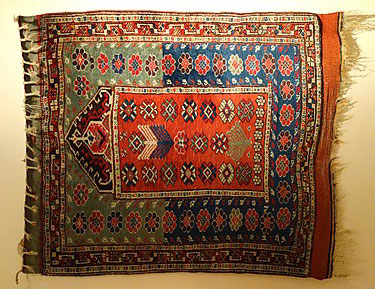ISLAMIC ARCHITECTURE
Islamic Architecture comprises the architectural styles of buildings associated with Islam. It encompasses both secular and religious styles from the early history of Islam to the present day.
Early Islamic architecture was influenced by Roman, Byzantine, persian, Mesopotamian and all other lands which the Arabs conquered in the seventh and eighth centuries.

A mosque (masjid in Arabic) is a place of worship in Islam. Although prayers can be said privately, either indoors or outdoors, nearly every community of Muslims dedicates a space or building for congregational prayer. The main architectural components of a mosque are practical in purpose and provide both continuity and a sense of tradition among Muslims worldwide.
Mosques are also used throughout the week for prayer, study, or simply as a place for rest and reflection. The main mosque of a city, used for the Friday communal prayer, is called a jami masjid, literally meaning “Friday mosque,” but it is also sometimes called a congregational mosque in English. The style, layout, and decoration of a mosque can tell us a lot about Islam in general, but also about the period and region in which the mosque was constructed.
Common Features
There is a great deal of variation among mosques around the world. Building materials and design depend on the culture, heritage, and resources of each local Muslim community. However, there are a number of features that nearly all mosques have in common.
The architecture of a mosque is shaped most strongly by the regional traditions of the time and place where it was built. As a result, style, layout, and decoration can vary greatly. Nevertheless, because of the common function of the mosque as a place of congregational prayer, certain architectural features appear in mosques all over the world.

Prayer Hall
Inside, the central area for prayer is called a musalla (literally, “place for prayer”). It is deliberately left quite bare. No furniture is needed, as worshippers sit, kneel, and bow directly on the floor. There may be a few chairs or benches to assist elderly or disabled worshippers who have difficulty with mobility. Along the walls and pillars of the prayer hall, there are usually bookshelves to hold copies of the Qur’an, wooden book stands (rihal), other religious reading material, and individual prayer rugs. Beyond this, the prayer hall is otherwise a large, open space.

Minbar
The minbar is a raised platform in the front area of a mosque prayer hall, from which sermons or speeches are given. The minbar is usually made of carved wood, stone, or brick. It includes a short staircase leading to the top platform, which is sometimes covered by a small dome.

Mihrab
Another essential element of a mosque’s architecture is a mihrab (a niche in the wall that indicates the direction of Mecca, towards which all Muslims pray). Mecca is the city in which the Prophet Muhammad was born, and the home of the most important Islamic site, the Kaaba. The direction of Mecca is called the qibla, and so the wall in which the mihrab is set is called the qibla wall. No matter where a mosque is, its mihrab indicates the direction of Mecca (or as near that direction as science and geography were able to place it). Therefore, a mihrab in India will be to the west, while a one in Egypt will be to the east.

Minaret
A minaret is a slim tower with balconies or open galleries from which a mosque’s muezzin calls the faithful to prayer five times each day. Minarets are distinctive traditional features of many mosques, though they vary in height, style, and number. Minarets may be square, round, hexagonal, octagonal, or even spiral and they are usually covered with a pointed roof. The word minaret derives from the Arabic word for “lighthouse” or “beacon.”

Dome
Most mosques also feature one or more domes, called qubba in Arabic. While not a ritual requirement like the mihrab, a dome does possess significance within the mosque (as a symbolic representation of the vault of heaven). The interior decoration of a dome often emphasizes this symbolism, using intricate geometric, stellate, or vegetal motifs to create breathtaking patterns meant to awe and inspire. Some mosque types incorporate multiple domes into their architecture, while others only feature one. In mosques with only a single dome, it is invariably found surmounting the qibla wall, the holiest section of the mosque. The Great Mosque of Kairouan, in Tunisia has three domes: one atop the minaret, one above the entrance to the prayer hall, and one above the qibla wall. Because it is the directional focus of prayer, the qibla wall, with its mihrab and minbar, is often the most ornately decorated area of a mosque












